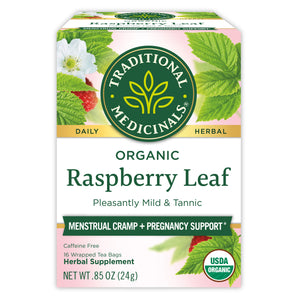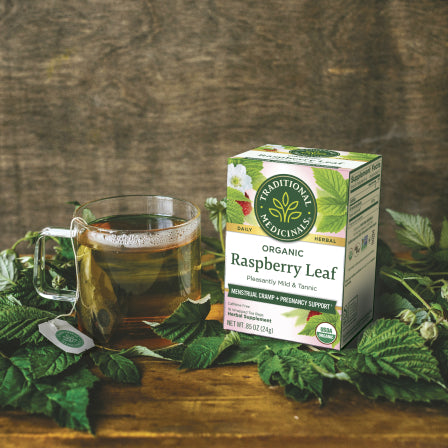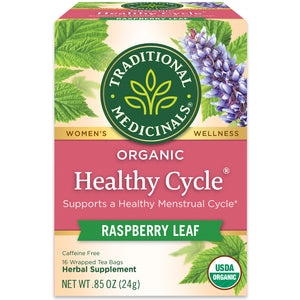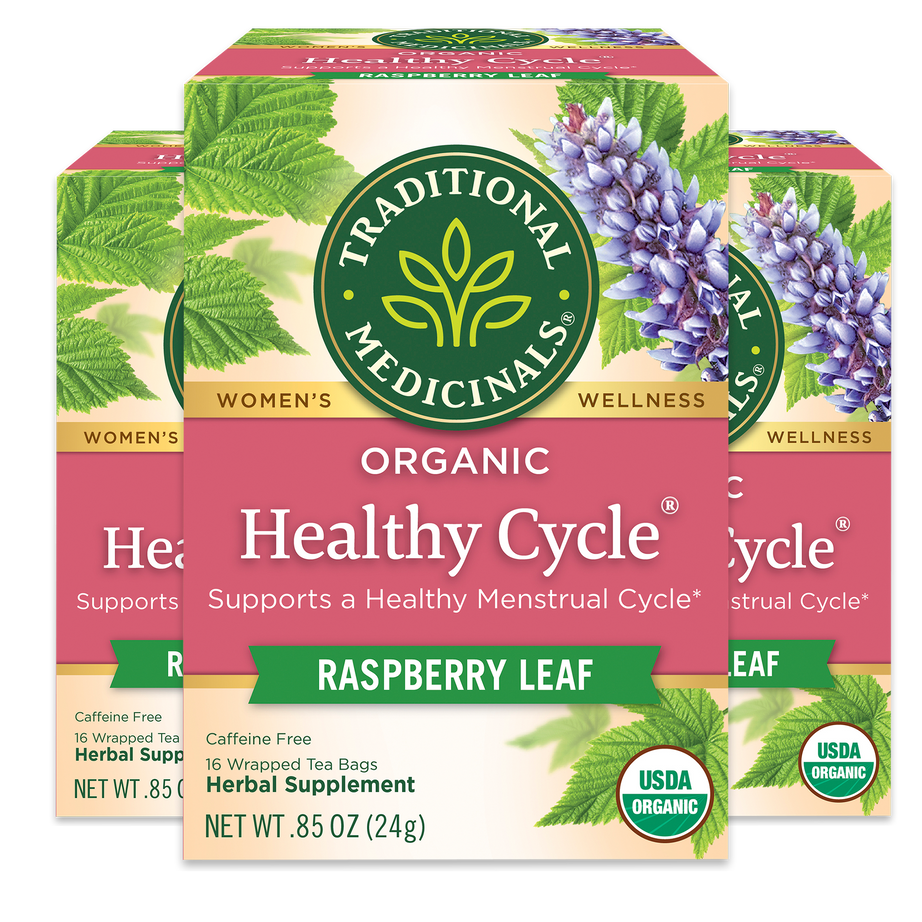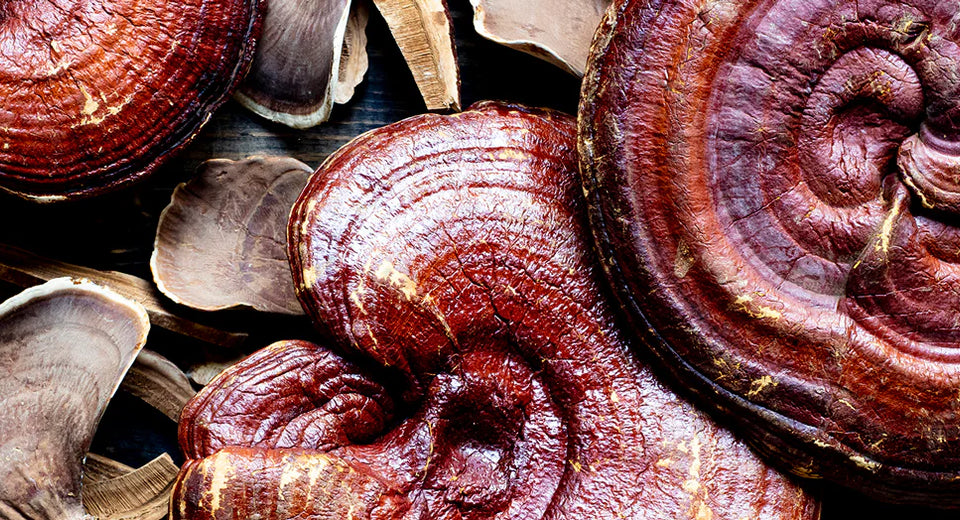
Raspberry Leaf 101
This wild looking plant with its juicy red berries may seem like just a simple sweet treat, but it’s much more than that. It was once said that the Greek Olympian Gods could be found collecting the ripe berries around Mount Ida, hence the name Rubus idaeus. It means “bramble of Ida” in Latin, but the raspberry bush wasn’t just adored by the Olympian Gods. It’s herbal medicine for us human folk too and provides food and shelter for many creatures.
The wild brambles of the raspberry bush are a nourishing shelter for birds, raccoons, coyotes, squirrels, skunks and all kinds of wild animals. It seems wherever this bramble grows, it becomes herbal medicine to the people nearby. Many ancient herbal traditions use the leaves of raspberry for its plant power. Because of the tannins in the leaves, this herb is what we herbalists call astringent, which basically means it helps to tone and tighten tissue. We make a Raspberry Leaf Tea to support healthy menstruation, tone the uterus and soothe menstrual cramps.* European and Native American women have used these leaves for thousands of years to prepare the womb for childbirth, and some farmers even use it for their lady goats who are expecting. And raspberry leaves aren’t just for women, the astringent action makes it useful when toning of the upper or lower gastrointestinal tract is needed.*

You’re probably already familiar with cooking the nutritious berries, but you can also get creative with our Raspberry Leaf Tea by creating popsicles or kombucha. Or just drink our tea on its own, which tastes delicious and is a full-bodied tea much like black tea but without the caffeine.
Raspberry bushes grow across the globe in temperate climates, and can be found in moist areas or places that have been cleared, endured fire or were somehow disturbed. We get most of our medicinal raspberry leaves from Bosnia and Bulgaria, where they grow wild and are gathered by hand by a group of collector families. If you’re eager to grow this yummy and medicinal plant, you can try starting it by taking a cutting of the stem or dividing some of the roots, and then planting it somewhere between full sun or partial shade. Be sure to plant enough for the birds, and don’t be surprised if the blooms attract many bees to your garden – it’s a good thing!
While our ancestors may not have known the exact constituents of raspberry, they had their own ways of communicating with the plants and understanding their uses. Europeans have been cultivating raspberries for thousands of years, and the Native Americans used many different species within the Rubus genus as herbal medicine. We think this cross cultural use of plants is no accident but rather just another testament to plant power. We hope you too are inspired by the rich herbal wisdom of those who came before us and that you’ll remember the leaf of raspberry when you’re needing to tone tissue or support healthy menstruation.*
For a deeper look into more plants we love, be sure to check out the PLANTS section of Plant Power Journal.

